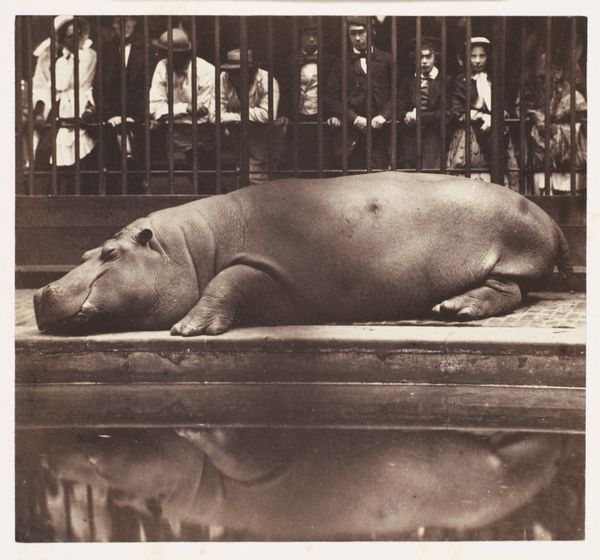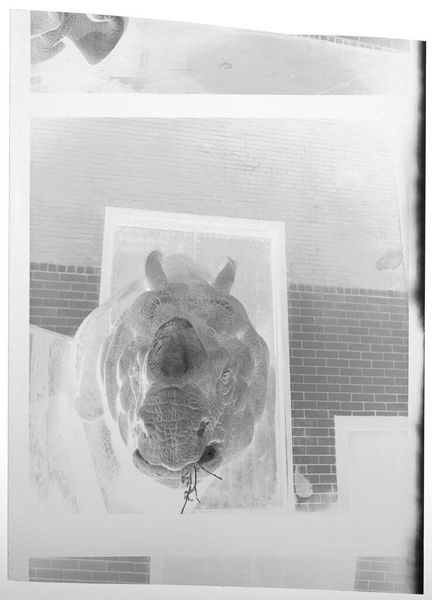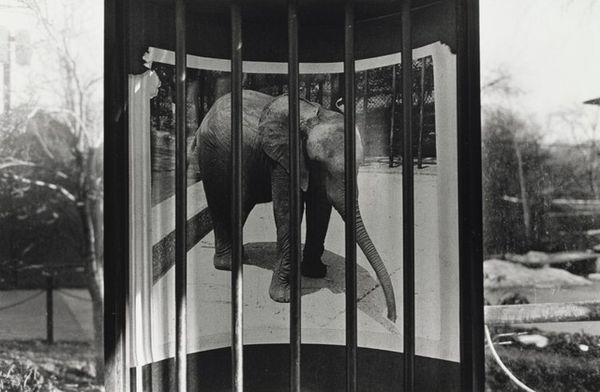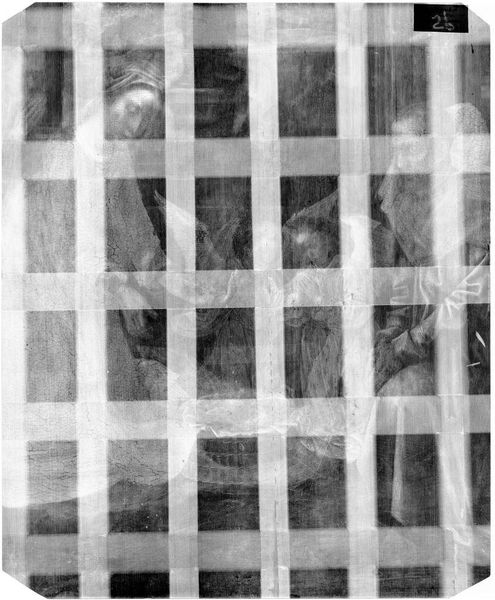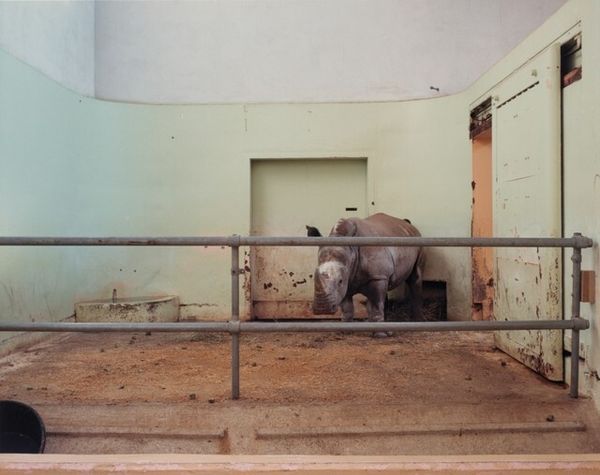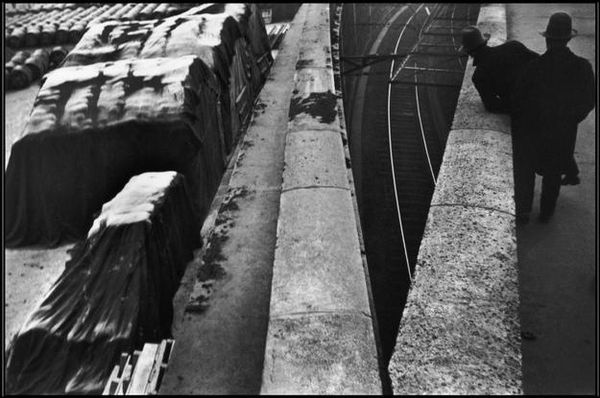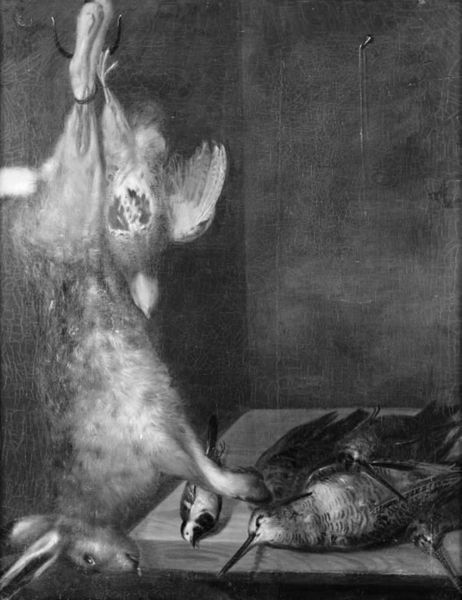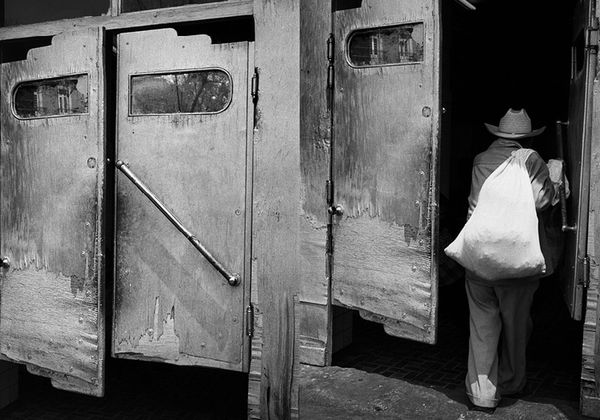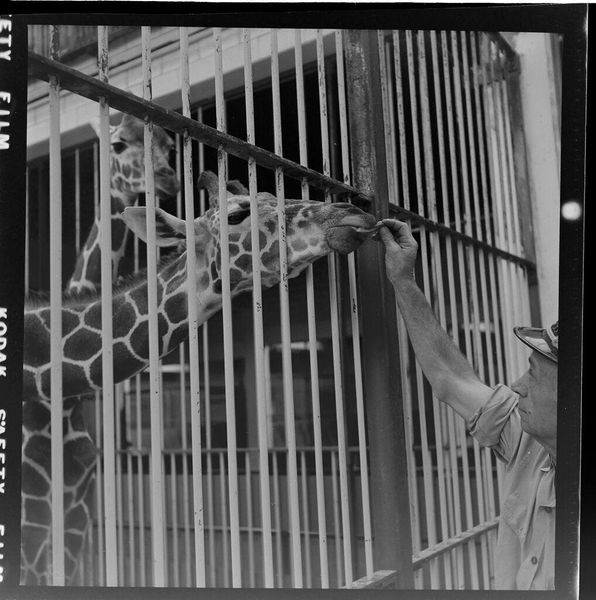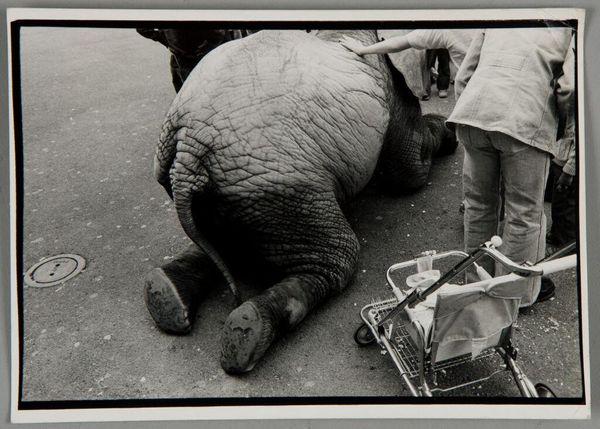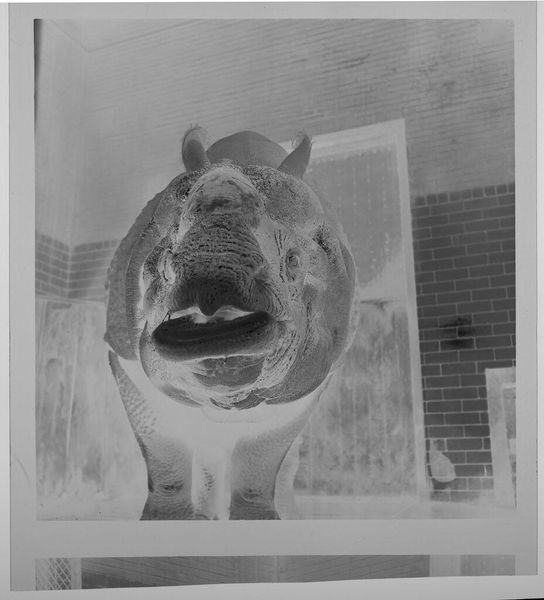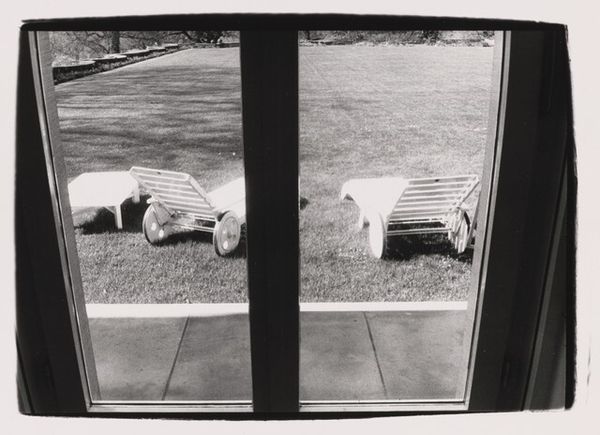
photography
#
still-life-photography
#
black and white photography
#
street-photography
#
photography
#
black and white
#
monochrome photography
#
street photography
#
monochrome
Copyright: Vivian Maier,Fair Use
Editor: We're looking at Vivian Maier’s 1955 black and white photograph, "New York (Two Hippos)." The heavy bars in the foreground and the subjects of the picture—two hippos—make the image feel almost claustrophobic. What strikes you when you view this work? Curator: The strength of this work resides in its composition and tonal range. Note how the rigid verticality of the bars creates a visual rhythm, segmented by the massive forms of the hippos. Maier’s meticulous control over contrast—observe the way light catches the rough texture of the hippo on the left, juxtaposed against the almost polished darkness of the hippo on the right—further accentuates the spatial relationship between the viewer, the bars, and the subjects. Is it a reflection on captivity, on viewership? Editor: I see what you mean, about the composition being really intentional. So you're suggesting that Maier might be playing with our perspective as viewers? Curator: Precisely. Consider the way the photograph flattens the space, compressing the foreground, middle ground and background and collapsing the hippo on the right into near abstract shape and shadow. What effect does that have on our understanding? Does it change how we interpret the emotional tone of the picture? Editor: That makes sense. It makes you think about how a zoo flattens wild things into a spectacle for consumption, just as the photograph does. The texture of the hippos really emphasizes the real, wild animal. Thank you for pointing those details out! Curator: You are very welcome. Considering such formal elements is a rewarding lens into Maier’s project.
Comments
No comments
Be the first to comment and join the conversation on the ultimate creative platform.
